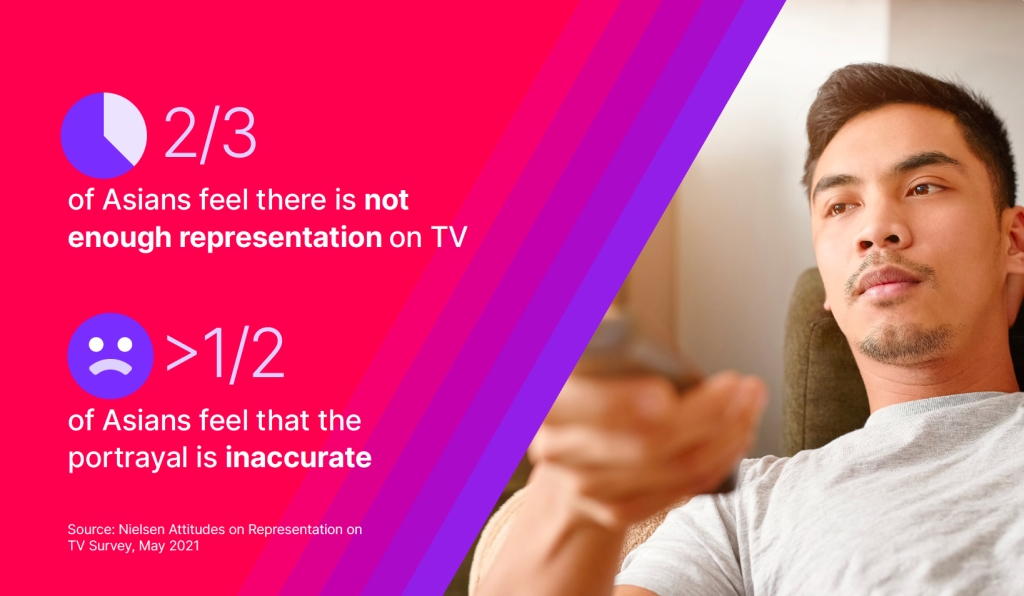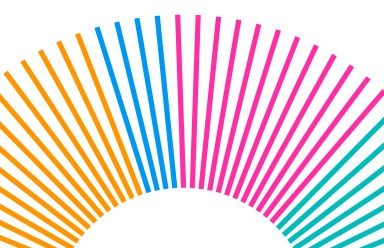While the pandemic may have been the catalyst for accelerating streaming adoption among the masses, it’s clear that audiences are making streaming a permanent, and growing, part of their lives. In fact, April marked a milestone for streaming, as for the first time, audiences spent more than 30% of their total TV time watching over-the-top video content.
In addition to increased time spent, audiences, particularly AANHPI consumers, are finding more representation on streaming services than on broadcast and cable television. Last year, AANHPI representation on streaming services was more than double that of broadcast or cable. According to Nielsen Gracenote Inclusion Analytics, AANHPI share of screen grew by 80% last year. But inclusion isn’t just increasing across streaming services. Overall Asian representation across cable, broadcast and SVOD increased 31% last year.
With more representative programs, comes more culturally relevant content. This increase in representation is bringing multi-generational households together for a shared content experience. On Disney+, for example, young Asian American viewers aged 18-24 watched AANHPI content with someone aged 65-74 nearly 8x more than Disney+ audiences overall. This trend continues across streaming platforms—on Netflix, co-viewing between these two age groups was 4.3x higher than audiences overall.
Disney’s Turning Red, which was originally released direct to consumers in the U.S. on Disney+, highlights both the power of representational content and co-viewing. The family-friendly movie about a young girl coming of age struck a chord with AANHPI audiences of all ages. The movie was among the most streamed titles in first-quarter 20221, and drew a multigenerational Asian audience far exceeding the average audience.
Asian viewers aged 75+ streamed Turning Red with kids in the home at nearly 3x the rate of viewers in the age group overall. And, the week following its premiere, 1.5x the number of Asian American 65-74 year-olds watched the movie with kids in the home.
All of this co-viewing can mean big opportunities for content creators who want to tap into the booming U.S. AANHPI audience—the Asian American community has experienced 39% growth in the last 10 years2 and had 2.1 trillion minutes of viewing power in 20213.
And while there has been progress in representation of Asian Americans on screen, media content still falls short in meeting the demands of audiences who want more accurate portrayals. The results of a recent Nielsen Attitudes on Representation on TV Survey found that the majority of Asian Americans feel there is not enough representation of their identity group on TV, and when they are seen on screen, they feel the portrayal is inaccurate.

AANHPI audiences want to feel seen, and are increasingly gravitating to culturally relevant content as rich as their own experiences, on platforms that offer the most choices. Content creators that can tell nuanced, authentic stories about the Asian American community can tap into a powerful, engaged—and multigenerational—audience.
For additional insights, download our AANHPI report—Confronting myth and marginalization: Asian American audiences and on-screen representation.
Notes
- Nielsen Streaming Content Ratings
- 2020 U.S. Census Bureau
- Nielsen Media Impact viewing minutes 2021



